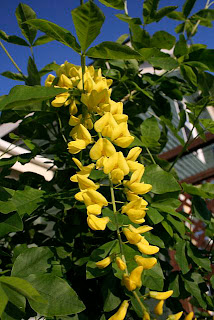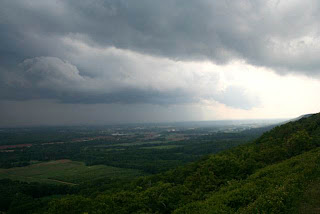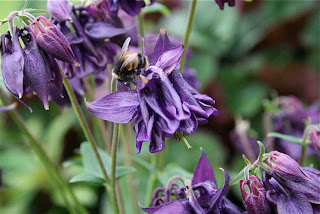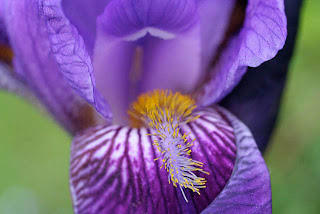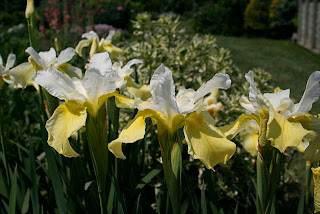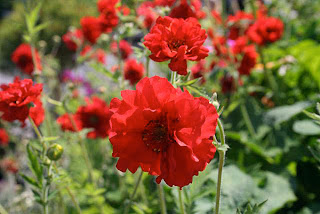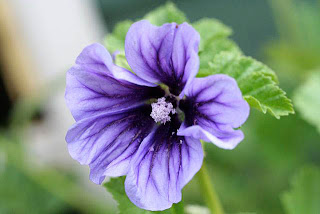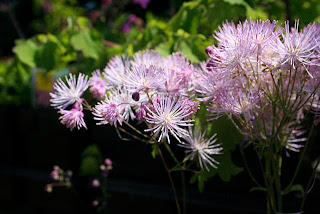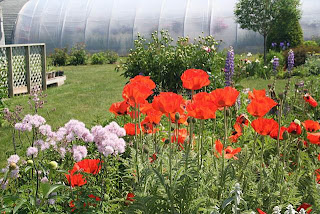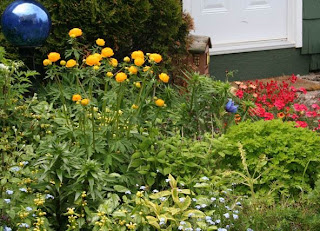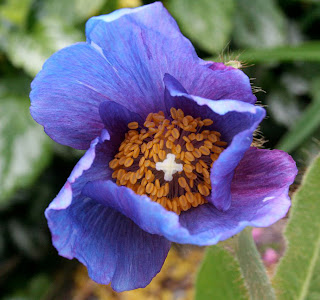
When I was in Annapolis Royal a couple of weeks ago, I took some time to go to the Historic Gardens for a visit and research for an article I'm working on. If you've never been to Annapolis Royal, it's worth a visit at any time of the year because it's steeped in history. Samuel de Champlain overwintered in the area back in 1605 and established a colony there before moving further into North America and establishing further posts.
Certainly the jewel of the town is the Annapolis Royal Historic Gardens, now in their 27th season of operation and a beloved destination for visitors as well as locals. The Gardens are unique in that they are a series of theme gardens, including a number that reflect periods in Nova Scotia's history. There are also collections, including the vast and glorious Rose garden, the rhododendron collection, and a fine collection of ornamental grasses that is partially responsible for my own growing love for these plants.

Although it was still early June when I was there, plenty of things were blooming (some of which are STILL or JUST starting in my Bay garden). The courtyard directly welcoming visitors from the admissions area/gift shop is cleverly planted with a sea of iris wedged between the stone pavers.

One of the most beloved spots for photos (especially of proms and weddings) is at the Laburnum arch. It also boasts several massive and wonderful rhododendrons near it for further colour.


This is the Governor's Garden, because from 1710 to 1749 Annapolis was actual the capital of Nova Scotia. The formal geometric plantings aren't my cup of tea, but they work very well for the setting and that's how they would have been planted back in the day.

This magnificent fountain is made of a variety of rocks quarried here in the province. It's one of my favourite parts of the garden.

The Knot Garden features interlaced patterned plantings of lavender, dwarf box and other low-growing plants. It's at its best when the lavender blooms, of course, and I was a few weeks early for that event. (Which is a perfect excuse to go back again soon!)

One of the wonderful things about the Gardens is how the site is on a sloping property, with gentle meanders here and there from the courtyard down to the Dyke walk. At one boundary of the Gardens is the Rock garden, built on a hillside and featuring alpines, dwarf shrubs and a few very fine Japanese maples.

There are several pond features throughout the Gardens. This one boasts a number of daylilies and hostas as well as beautiful flowering shrubs and mature trees.

The rhododendron and azalea collection includes a number of varieties developed at the Kentville Research station by Dr. Craig, as well as plants bred and tested by my beloved friend Captain Dick Steele, plantsman extraordinaire.

Minas Gold is a gorgeous cultivar bred in Kentville.

While I didn't get the cultivar names of all the rhodies and azaleas, they are bred to be cold-hardy as well as sporting magnificent colours. I become more and more enamoured of rhododendrons and azaleas with every passing year, and am preparing to add a few here this summer. (No, haven't done it yet. Not enough time. I need High-speed LIFE, not just highspeed Internet!)

At the base of the gardens is a walk out onto the dykelands that hold back the Annapolis Basin from covering some highly fertile and arable land in salt water. The dykes were originally built by les Acadiens pre-expulsion (1755) and include remarkable aboiteaux, or sluiceways, which they constructed using hollowed-out logs with one-way gates in them. There's an Acadien cottage featuring a potager garden in the Gardens, but I was in a hurry the day I was there and didn't get to that area. Yet another reason to go back soon.

And this is a remarkable barberry, the species or variety of which I don't know. The shrub was about twelve-fifteen feet tall and quite glorious. Anyone know what it is? I could ask the horticulturists at the Gardens, but thought it might make a good puzzle for readers, too.
If you're in Nova Scotia this summer--if the price of gas as set by our greedy asinine governments (federal, provincial and elsewhere) doesn't traumatize you into staying home...Annapolis Royal is always well worth the visit. Bring lots of film or a big memory card, because these are just a few of the photos I took--and as observed, the rose garden and other gardens weren't yet in full colour. The Gardens director also does a regular bloom report throughout the season, which I believe you can sign up for via the website.

